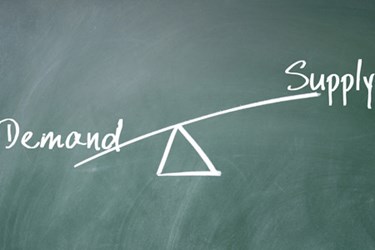In Outsourcing, Genzyme Sees An Advantage

By Louis Garguilo, Chief Editor, Outsourced Pharma

The theory of supply and demand postulates that in a competitive market, the price for a good or service will vary until reaching a point of economic equilibrium. How nice and neat that all sounds. In the meantime – in real-life marketplaces – supply and demand lurches from one side to the other, and provides strategic advantages or relative challenges to buyers and sellers.
Piet Houwen, head of Biologics External Manufacturing at Sanofi, has been thinking about all this applied specifically to the realm of the biologics outsourcing industry. For over twenty-plus years, starting with P&G, moving through Janssen, and pre- and post-Sanofi acquisition at Genzyme, he’s also acquired a skilled approach to negotiating with the supply side of the business.
Balance Tipping to the Demand Side?
 Biotechs from early on embraced the model of advancing their new sciences and technologies in the labs, fermenters and facilities at other companies. Who had the upper hand – the pricing power – in this outsourcing relationship? Has that balance shifted back and forth since?
Biotechs from early on embraced the model of advancing their new sciences and technologies in the labs, fermenters and facilities at other companies. Who had the upper hand – the pricing power – in this outsourcing relationship? Has that balance shifted back and forth since?
While we can’t definitely settle that here, Houwen, who will be a panelist at the upcoming Outsourced Pharma Boston conference to discuss the future of outsourcing, sees the situation this way: “Starting from today, where I’d say the market relationship is sixty percent driven by the sellers, I believe we’ll see a change to a move in the direction of the sponsors.”
That redirection might be attributed to biologics-focused CMOs falling victim to some of their own success. “That dynamic of the growth of demand chasing a lack of capacity is rapidly evolving,” says Houwen. He sees this evidenced by companies such as Samsung BioLogics , building out large-scale facilities for mammalian cell culture services in Korea. And in Europe, for example, with the recent announcement by Boehringer Ingelheim to invest in Austria. There’s also internal expansion and new build-out at sponsors themselves, including in the U.S. “When all these facilities and additional capacity becomes available,” says Houwen, “it’ll change the whole competitive landscape.”
As he notes above – and astute readers have recognized– this flies in the face of the currently accepted meme that we are heading towards a capacity crunch on the biologics front. Houwen adds, “Particularly from a pricing of services point of view, I think over the coming couple of years, the advantage will move to the innovators. There will be more choice going forward. We are already starting to feel that.”
The Weight Of Experience
If all this biologics manufacturing capacity does come on line over the next few years, it should be enough to take care of the growing demand. In addition, Houwen says companies like Sanofi can add to that inherent advantage – more options and competition for its business – with the human factor: Personal experiences at innovators gained over the years, for use in negotiating deals with CMOs.
Houwen himself is one such example. He, like many others nowadays, has spent years and gained extensive experience managing facilities or running operations. The once new field of biologics manufacturing, if you will, now has some years under its belt. “Sponsors – including biotechs – know more about what it takes to run these plants and manage networks,” says Houwen. “At an experienced company like Sanofi, we can relate well to the challenges that CMOs are dealing with regarding the complexities in their own manufacturing facilities.
“People say biotech manufacturing is unique, and I agree to a certain extent,” he continues. “But at the end of the day, a plant is a plant. Stuff comes in, a conversion step happens, and stuff goes out. Plant operations have common themes that are universally applicable, regardless of whether you are with an OEM, an innovator, or a CMO.” These areas of commonality, according to Houwen, include performance management, continual improvement, quality challenges, scrutiny by agencies, and financial pressures. “Being a CMO does not make these challenges unique to or tactically different from when you’re on the other side of the table,” he says.
All of the above – capacity coming on-line, more experience and understanding – should not result in sponsors somehow pressing an advantage, but, says Houwen, lead to “more enlightened and fairer negotiations, based on a new mutuality of fit and purpose.”
Negotiating For A Balance
Inherent in any hiring of external manufacturers is, of course, the contractual and business negotiation. How do sponsors and providers find a win for both sides? Houwen answers this by drawing on personal experience from his years at both Janssen and Sanofi, and from positions that include general manager, and working closely with “HR” and related people aspects of the business.
“Typically, you put facts and figures around certain items when you sit down at the negotiating table,” explains Houwen. “That has to be one piece. However, the majority of negotiation in the partnership is about the right personal connection. Is there the chemistry and trust there? That can help create a path to a win-win, a dependable and functioning contract, and ensuring a sustainable relationship over time.”
Since today sponsors and CMOs exist globally, and negotiations take place in many parts of the world, I ask Houwen his thoughts about dealing with companies in different locations and countries. “Many of the CMOs we work with have global reach,” he says, “and a company like ours might have somewhat different cultures within its own network. You shouldn’t draw conclusions. Regardless of where the CMO or sponsor comes from, it’s always important to take time to understand that particular business culture, and who the decision makers are. The process at the negotiation table may be different from company to company, and within companies.”
Houwen says that regarding topics like “cultural sensitivity, or “organizational culture,” sponsors should have feelers out very early in the discussions. He advocates investing the time to get to know the CMO up front, and not aggressively push to the core discussions. “Because,” he explains, “then you may find yourself misaligned when you are already halfway through the process. Suddenly, you can’t read from the same sheet of paper.”
Finally, taking all the above into consideration, I ask Houwen if it’s a favorable environment to increase external manufacturing?
“Internal network capacity versus external partnerships remains a question of strategy, and ascertaining where the healthy balance lies,” he replies. “Is it 50-50? Is it 70-30? It’s a question that’s front and center in our current biologics strategy within all of Sanofi. We are developing internal capacity, we have strategic partnerships with companies, such as Regeneron and Alnylam, and we have our CMO partnerships. We have these three dimensions to consider when it comes to make-versus-buy decisions.”
And it appears that if the decision is for a “buy,” Sanofi might just have some demand-side advantages in coming years.
